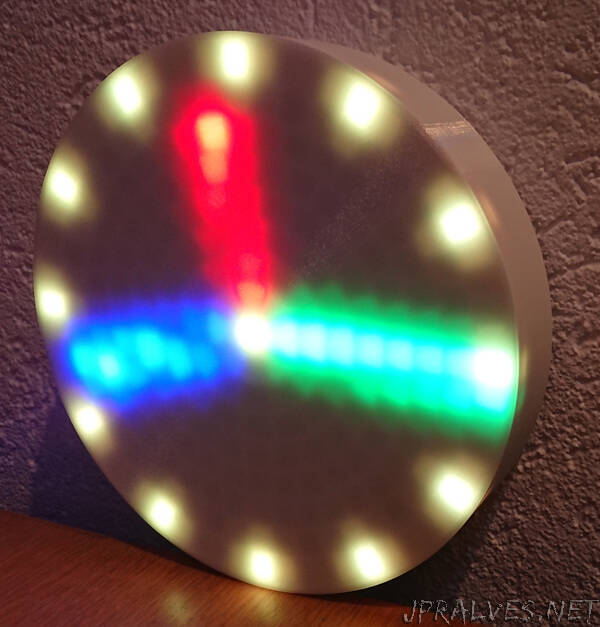
“A clock with 241 RGB LEDs.
Description
The clock shows the hands in diferent colors on the grid of LEDs. To make it more beautiful hands are antialiased. The brightness of the LED is calculated from the distance to the virtual pixel. I also use the milliseconds clock of the Arduino combined with the NTP clock to have a seconds hand that rotates fluently instead of ticking the seconds.
Introduction
As a sucker for clocks I’m always looking for cool projects surrounding clocks. At our favorite Chinese shop I found a 241 LED ring that demanded to become a clock. So I ordered one and waited the standard couple of weeks for it to arrive. Nice, It looked perfect and very easy to use. Data-in and Data-out were next to each other and could simply be daisy-chained with a short piece of wire. Effectively the ring became a strand of 241 LED’s all addressable from a serial bus.
Now I needed to design a enclosure. Each LED needs to be separate from the neighboring LEDs. Some calculations were needed but after a couple of hours I had my 3D design in Blender. 26 hours of printing resulted in an enclosure that perfectly fits the LED ring.
I started by testing with an example program to see if all functions as expected and it did. The current it takes at full brightness is a bit high but that is no problem while the clock in normal operation is not at full brightness and not all LEDs are lit.
After the testing I wrote an Arduino program to show time based on NTP and once in a while shows an effect.
Some trickery was needed. I wanted the seconds hand to move smoothly and so I used the milliseconds as an offset to the seconds.
Calculating the hands uses the ‘pow()’ function and that is a very CPU intensive operation. That is why I created a function that caches the previous values of the ‘pow()’ function to make it a lot faster.
After all I’m quite happy with the result :)”
